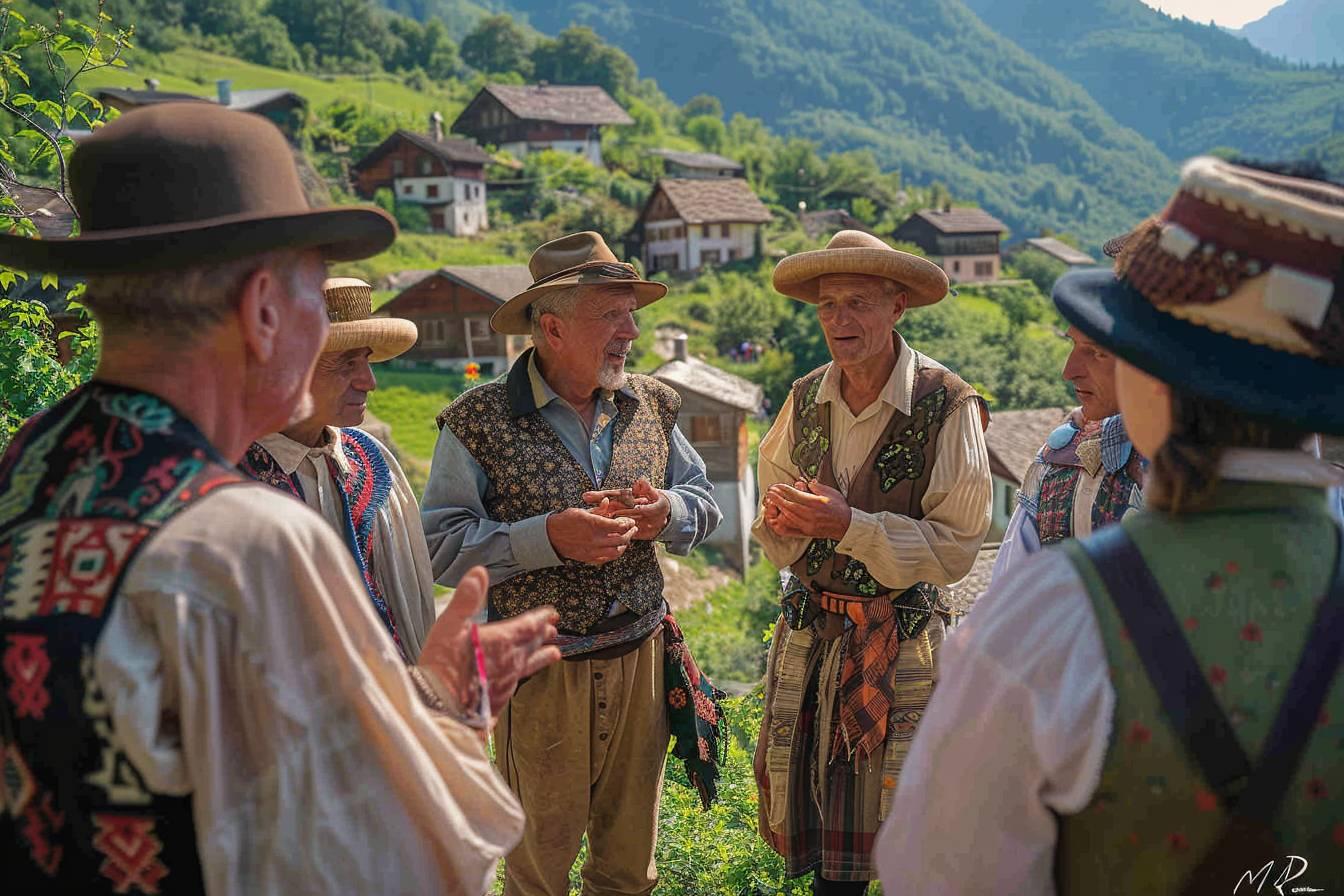Switzerland, a country at the heart of Europe, stands out for its exceptional linguistic diversity. With four official languages, this small Alpine state offers a unique and interesting linguistic landscape. Let’s discover together the particularities of this Swiss multilingualism and its impact on the everyday life of the Swiss.
Switzerland’s four national languages: a rich linguistic heritage
The Swiss Confederation officially recognizes four national languages: German, French, Italian and Romansh. This linguistic diversity is deeply rooted in the country’s history and culture. Each of these languages has its own territory and regional characteristics.
German is the most widely spoken language in Switzerland. It is spoken by around 62.6% of the population, mainly in the northern and central regions of the country. However, it should be noted that Swiss German, or Schweizerdeutsch, differs considerably from standard German.
French, the second most widely spoken language, is used by 22.9% of the Swiss population. It is mainly spoken in the western part of the country, known as Suisse romande. The cantons of Geneva, Vaud, Neuchâtel and Jura are entirely French-speaking.
Italian, the third national language, is spoken by 8.2% of the population. It is mainly spoken in the canton of Ticino and in certain valleys in southern Graubünden.
Finally, Romansh, a language of Rhaeto-Romanic origin, is the least widely spoken of the official languages. It is spoken by just 0.5% of the Swiss population, mainly in the canton of Graubünden.
| Language | Percentage of speakers | Main regions |
|---|---|---|
| German | 62,6% | North and Central |
| French | 22,9% | West (French-speaking Switzerland) |
| Italian | 8,2% | South (Ticino and Grisons) |
| Romansh | 0,5% | Graubünden |
Geographical distribution of languages in Switzerland
The distribution of languages in Switzerland follows a fairly clear geographical pattern. This linguistic distribution is the result of centuries of history and diverse cultural influences. Each linguistic region has its own characteristics and traditions.
German-speaking Switzerland, which covers most of the country, is the bastion of the German language. It includes cantons such as Zurich, Bern, Lucerne and Basel. The main language spoken in this region is Schweizerdeutsch, a collection of Alemannic dialects that can vary considerably from canton to canton.
Suisse Romande, or Western Switzerland, is the French-speaking part of the country. It includes the cantons of Geneva, Vaud, Neuchâtel and Jura, as well as parts of Fribourg, Valais and Berne. French spoken in French-speaking Switzerland has a number of lexical and phonetic peculiarities compared with French spoken in France.
Italian-speaking Switzerland is concentrated mainly in the canton of Ticino, south of the Alps. Italian is the predominant language, with its own dialectal variants. There are also Italian-speaking communities in some valleys of Graubünden.
Romansh, meanwhile, is spoken in some valleys of Graubünden. Although a minority language, it is protected and promoted by the federal and cantonal authorities to preserve this unique linguistic heritage.

Living and traveling in Switzerland: linguistic challenges and opportunities
Switzerland’s linguistic diversity offers both enriching opportunities and practical challenges for those who live or travel here. This mosaic of languages has a profound influence on everyday life, education and social interaction in the country.
For visitors, it’s a good idea to find out about the main language of the region you’re visiting. Here are some practical tips:
- In German-speaking Switzerland, standard German is generally understood, but Schweizerdeutsch is widely used in everyday life.
- In French-speaking Switzerland, French is the main language of communication.
- In Ticino and the Italian-speaking valleys of Graubünden, Italian is predominant.
- In major cities and tourist areas, English is often spoken as the language of international communication.
For those planning to live and work in Switzerland, fluency in the local language is a major asset. Many companies and institutions value multilingualism, and the ability to communicate in several national languages can be a considerable advantage on the Swiss job market.
Education in Switzerland also reflects this linguistic diversity. In many cantons, pupils learn a second national language as early as elementary school. This approach aims to promote mutual understanding and national cohesion.
Swiss multilingualism: a unique model in Europe
Switzerland’s official multilingualism is unique in Europe and the world. This linguistic model is deeply rooted in Switzerland’s national identity, and plays a crucial role in the country’s cohesion.
The Swiss Confederation has developed institutional mechanisms to guarantee equality between national languages. For example:
- Federal laws are published in all four official languages.
- Parliamentary debates are translated simultaneously.
- Official documents are available in several languages.
- Government websites are multilingual.
This official multilingualism encourages individual multilingualism. Many Swiss people are fluent in two or three national languages, which facilitates communication and exchanges between the different linguistic regions.
However, this linguistic model is not without its challenges. The preservation of minority languages, such as Romansh, requires constant effort. What’s more, the coexistence of several languages can sometimes create communication barriers, particularly in the world of work or education.
Despite these challenges, Swiss multilingualism remains an exciting example of harmonious linguistic diversity. It testifies to a country’s ability to unite diverse linguistic communities under a common national identity, while preserving the cultural particularities of each region.
